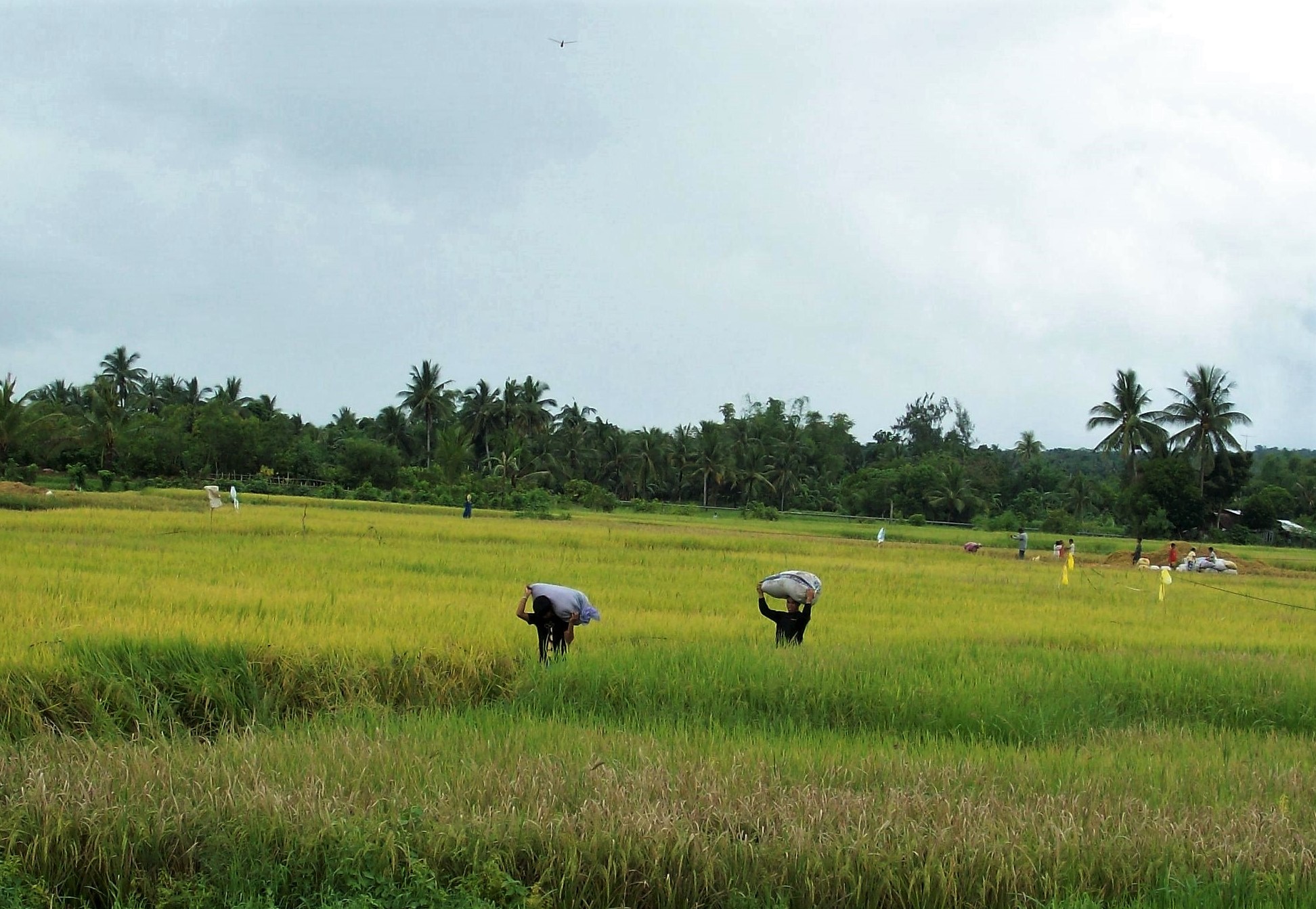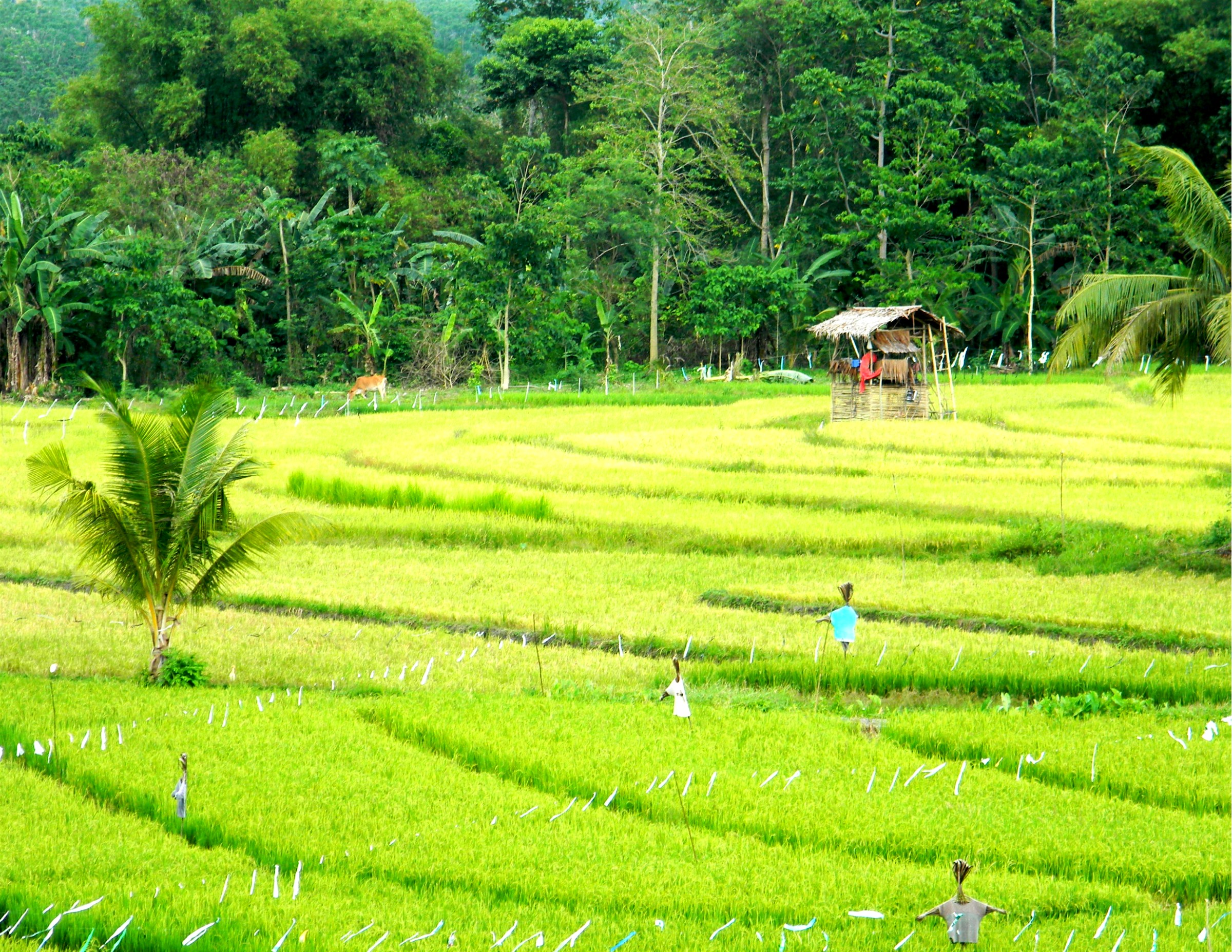Text and Photos by Henrylito D. Tacio
Rice straw, a by-product of rice production at harvest, is perceived to have little or no commercial value. But Craig Jamieson has discovered a novel way of using discarded wastes as a source of energy in rural areas.
Jamieson, who’s originally trained in horticulture but has a master’s degree in International Rural Development, is putting into practice what he is known for: sustainable biofuels and bioenergy.
“Rice straw is one of the world’s largest bioenergy resources,” said Jamieson in an exclusive interview. His work has taken him across Africa and Asia developing bioenergy solutions that enhance rather than compete with food production. “We want to showcase different ways to use it as clean fuel.”
Rice straw, locally known as dayami, is one of the largest biomass resources around the globe, along with sugar cane bagasse and corn stover. Unlike the grain’s cover (called rice hulls), rice straw is being left in the open field after harvest, and standard combine harvesters are not designed to handle it.
Studies conducted by the Laguna-based International Rice Research Institute (IRRI) showed that for every 4 tons of rice grain about 6 tons of straw are also produced, which are left in the open field.
“Globally, roughly 800 to 1,000 million tons per year of rice straw is produced, with about 600 to 800 million tons per hectare produced in Asia,” said IRRI. In the Philippines alone, about 11.3 million tons of rice straw are produced after every harvest.
Most Filipino farmers left rice straw in the open field and/or burned later. When left in the flooded fields, decomposed rice straw generates methane-emitting bacteria. Some of the produced methane is released into the atmosphere.
Methane is a powerful greenhouse gas, which drives climate change. Over a 20-year period, methane is 80 times more potent at warming than carbon dioxide, according to the United Nations Environment Program (UNEP).
Burning rice straw, however, is not also a good practice. About 60%-80% of rice straw is burned, studies done by the Philippine Rice Research Institute (PhilRice) showed. Burning, they claim, is the most economic and efficient way of clearing the land for the next planting season.
But when done frequently, burning rice straw could reduce the soil’s nitrogen and phosphorus content by 25%, according to Evelyn Javier, supervising science research specialist of PhilRice’s Agronomy, Soil, and Physiology division. “(Burning) also cuts potassium content in soil by 20% and sulphur by 5-60%,” she said.


In addition, some beneficial insects are most likely to be killed when rice straws are burned in the open field. “Useful insects kill some harmful insects which destroy palay and make production less,” she added.
More importantly, burning also causes air pollution as it produces carbon dioxide, carbon monoxide, nitrogen dioxide, and sulphur dioxide. Most of these are also classified as greenhouse gases.
An assessment report from the Nobel-prize winning Intergovernmental Panel on Climate Change (IPCC) projected that burning of crop residue, including rice straw, provides “a fairly good amount” of greenhouse gas emission by the agricultural sector.
Rice is the staple food for more than half of humanity. About 90% of the world’s crops are grown and consumed in Asia. Across the thickly-populated region, some governments are trying to outlaw the practice of burning rice straw.
However, several burning alternatives – like incorporating the straw into the paddy field, followed by alternate wetting and drying to reduce methane emissions – are recommended but not always possible. Growing rice on uplands is another option because straw can be incorporated into the soil without high methane emissions of flood rice fields, but it results in reduced yields.
In the past, attempts to profitably collect and use rice straw for clean energy have almost all failed. That’s being turned around by Jamieson. In 2016, with financial support from the United Kingdom government, he established an industrial pilot plant making clean fuel from waste rice straw under a company called Straw Innovations Ltd., where Jamieson serves as its director.
“All around the world, the hunt has been on for a large amount of biomass that can be used for delivering clean energy without competing with anything else and we have millions of tons of it being burnt,” Jamieson was quoted in an earlier interview by World Biogas Association. “That’s a clear indicator that it’s there for the taking – a potentially vast resource that can be used for bioenergy and food production.”
Right now, Straw Innovations Ltd. is teaming up with the Laguna-based Southeast Asian Regional Center for Graduate Study and Research in Agriculture (SEARCA) in a three-year project called Rice Straw Biogas Hub.
The project is funded by Innovate UK under the auspices of the United Kingdom Research and Innovation organization. Also involved with it are UK SME Koolmill and UK academic partner Aston University.
The project is expected to make clean energy accessible to remote and underserved rural communities. “(It) will generate biogas as clean energy from waste rice straw and provide an innovative package of technology services for rice farmers,” said Dr. Glenn B. Gregorio, SEARCA Director.
The clean fuel is used for drying the grains and milling thereafter. “We asked farmers and their preference was to use the energy for productive purposes rather than domestic use. So, that’s what we are doing,” Jamieson explained.
According to Jamieson, his UK-registered group has established a rice drying service through the combustion of biogas from rice straw.
Drying is the most critical operation after harvesting a rice crop. When rice is harvested, it contains up to 25% moisture. The goal of rice drying is to reduce its moisture content to meet the recommended levels for sale, long-term storage.
“It is important to dry rice grain as soon as possible after harvesting – ideally within 24 hours,” IRRI explained. “Delays in drying, incomplete drying or ineffective drying will reduce grain quality and result in losses.”
IRRI said high moisture level during storage can lead to grain discoloration, encourage the development of molds, and increase the likelihood of attack from pests. If the grains are used for seeding purposes, the germination rate is greatly decreased.
But before drying, rice has to be harvested first. Here, the Straw Innovations Ltd. is introducing a rice harvesting system that it has developed over five years. “The main problems are in getting the rice straw out of the field and to a place where it can be used,” he said.
The solution: the 5-in-1 harvesting technology, referring to a machine which is said to be the first of its kind in the world. “Our machine performs in one pass of the field and performs the five separate operations in conventional straw collection – harvester, chopper, rake, densifier, and collection. It’s more efficient and, critically, it works even in wet conditions (muddy or flooded fields),” Jamieson pointed out.
The collected palay are then brought to another machine where the grain is separated from the rice straw. “At the biogas hub, a dryer dries the rice grain with energy from the rice wastes, another removes the husk and another mills the grain to remove the brain, thus giving the final product,” Jamieson said.
The dryer takes about 12 hours for the grain to dry, Jamieson said. “The technology innovation is to use rice straw to power the process,” he said. “We give farmers the option to retain ownership of their grains throughout the process.
“In some of today’s cases, farmers only get 4% of the purchase price of rice. In our model, farmers can use our harvesting, drying, and milling services and then sell the finished products to the public. We just take our cut after the sale….”
To produce methane in the hub, water is added with the rice straw. The methane gas is a direct substitute for diesel or kerosene in conventional dryers.
“In the past, the government tried to give out free rice dryers but as soon as something broke, the dryers were no longer used,” Jamieson said. “Our business model is to own and operate our equipment and offer it as a service to farmers. They pay us a service fee but don’t need to buy or operate our equipment.”
During the process, the rice straw gets broken down into fertilizer, which can be used to fertilize the rice. Or, it can be applied as organic fertilizer for crops, vegetables and fruits. “It can be used for anything,” he said.
Dr. Gregorio said the Rice Straw Biogas Hub demonstrates efficient removal of waste rice straw from farmers’ fields and conversion into eco-friendly and commercially viable products, focusing on biogas and fertilizer.
“With this, it is envisioned that farmers could triple incomes while protecting the environment,” Dr. Gregorio stressed. “Through an affordable, value-adding commercial business model, farmers will avoid buying and maintaining expensive equipment.”
The clean fuel produced in the biogas is only used for drying rice grains. Because that’s what the farmers in the area need. Jamieson, however, the fuel can also be used for cooking. “If that’s what those concerned farmers and communities want, why not?”
Dr. Gregorio, an academician with the National Academy of Science and Technology (NAST) added that the biogas hub will engage farmers in a working model for income resilience. “SEARCA will help measure and establish the impact of the hub on farmer incomes, equality of opportunity, food security and decarbonization benefits, and will also be involved in formulating recommendations for policymakers,” he pointed out.
For its part, Koolmill will showcase its energy-efficient rice milling technology, packaged in a pay-per-use business model. As for Ashton University, it will conduct surveys in Laguna and major rice-growing areas across the country to assess attitudes toward and socioeconomic impacts of the hub and proposed business models.
Jamieson is very hopeful about the Rice Straw Biogas Hub. “This new project will demonstrate how rice straw can be used to supplement manure and other wastes in biogas production,” he said.
The British innovator believed the biogas hub can prevent the burning of millions of tons of rice straw as waste across the region each year. “The hub has exciting potential to bring clean energy access to the 150 million small-scale rice farmers who need it to process their crops and generate new income opportunities,” he said.
Dr. Gregorio is also very optimistic. “Rice straw biogas is an innovative way to increase our efficiency in producing rice and maximize the utilization of its by-products like straw for energy,” he said in an exclusive interview. “(It’s) a good example for a circular economy – nothing goes to waste. This is carbon-wise rice farming.”
Jamieson is hoping the project will help address energy challenges faced by developing countries like the Philippines. He argued however that what his group is doing is not the only way to use rice straw for energy; it’s just showcasing one route among many. “Once we have harvested and collected the rice straw, the choice of end use will be site specific to some degree,” he pinpointed.
Just recently, Straw Innovations Ltd. was one of the three successful companies recommended by Shake Climate Challenge for £100,000 of investment.



